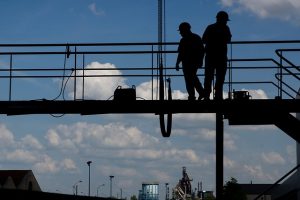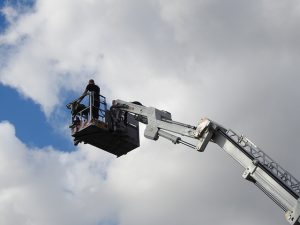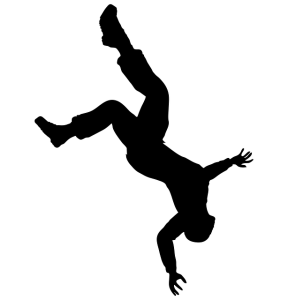Toolbox Talks
Topic: Work at Height
Definition

Any work to be performed at a height of 2 / 1.8 meters (as per locations) or above from the ground level where a person is standing is defined as work at height. Even a job being carried out below the ground level is classified as “Work at Height”. Eg: Work in an excavated area is a work at height.
For works at more than 2 / 1.8 meters height, where there is no permanent platform, the job requires a permit to work along with a work at height checklist.
Working at height includes working on:-

The major hazards to consider when working in an elevated position are:

- Falling,
- Dropping objects onto workers below.
- Any object dropped from height can cause serious injury or death when it falls on somebody below i.e. bolt, hand tools, spanner, plier, etc.
- Whenever possible tools should be fastened by lanyard to ensure it doesn’t fall if dropped.
- Avoid working at different levels on a scaffold or structure and barricade the area under where people are working at height.
- Good housekeeping at height is essential – loose objects left at height can easily be kicked or knocked causing them to fall.
When it is necessary to work at height, ensure that precautions are taken to prevent anyone falling and to prevent anything being dislodged or dropped onto.
Work at heights is safe providing you use a proper means of access and take the necessary precautions to prevent falling.
- Never climb the structure of the plant.
- Never use the bucket of a loading shovel or the forks of a forklift truck as means of access.
- Never work at any place unless there is safe footing, or from where you could fall. Always consider the use of handrails and toe board, fencing and other equivalent protection and wear safety harness attached to a suitable anchor point.
- Never climb on a scaffold with RED flag hoisted.
Fall Arrest consists of:
- Lanyard.
- Anchorage Point,
- Full Body Harness.
They should be inspected prior use, protected against being cut or abraded and attached to an anchorage at height (not at the same level).
Carry tools to worksites at height:
- The worker should carry their tools in a secured bag/pouch. their hands should be free to maintain the 3-point contact which using the ladder.
- Heavy tools / materials like big wrenches, spanners, heavy blinds, blind flanges, etc. are to be lifted by a suitable winch or a secured chain pulley / block to the designated level.
Abnormal weather conditions
- Work at height jobs shall be suspended during harsh weather conditions like stormy winds, rains and thundering & lightening.
Welding / Cutting works at height
- It should be ensured that the sparks flying out form Welding / Cutting works (i.e., hot works) are contained properly to avoid their falling on adjacent pipes / vessels & at ground.
General Do’s & Don’ts for working at height:
Do’s

- Do a visual inspection of work at height equipment before each use.
- Provide protection from falling objects.
- Make sure equipment used for work at height is well maintained and inspected regularly.
- Area barricading at the ground while working at height.
- Carry tools / tackles securely at height.
- Make 3-point contact while ascending or descending a ladder.
- Only one person should use a ladder at any one time.
Don’ts
- Use a ladder horizontally as a working platform.
- Use a wooden / Bamboo ladder.
- Lean or overstretch.
- Work on incomplete scaffold.
- Make any modification / alternations to the standard work at height equipment.


